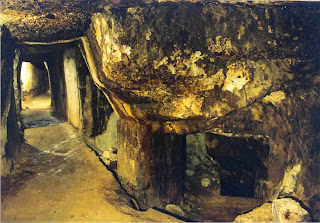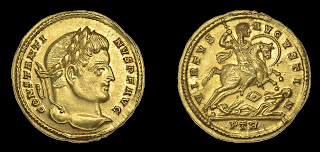A problem for those who did not bake their own was the fluctuation of prices. This was not always the fault of the baker, however. Harvests were variable, and the price of grain rose and fell with the weather. There were cheaper breads, of course, but their prices fluctuated as well. Bakers might also indulge in what our modern era calls "shrinkflation," the reduction of the amount of goods for the same prior price, or "skimpflation," the use of less-desirable material (oats mixed in with the wheat, for example) to make a sold good.
These changing prices affected everyone, including royal households who consumed far more than a typical family. King Henry II of England and his son John both established rules for the price of bread to make their own households run smoothly and inexpensively. It wasn't until John's son, Henry III, that a nationwide pricing structure was declared about 1266. It was initiated by bakers in Coventry who wanted standards established to save them from accusations of unfairness or price-gouging. This was the Assize of Bread and Ale.
The immediate object of the Assize was to fix the size of the loaf of bread. Whatever might be the fluctuations of the corn-market*, loaves were sold at a farthing**, or a half-penny or a penny; the size of these loaves would therefore vary according to the price of corn, becoming smaller as the price of corn rose and larger as it fell.[link]
About the Feast of St, Michael (29 September) the results of the year's grain harvest could be judged, and the prices/sizes could be determined for the next 12 months.
This Assize was the longest-lasting law of its kind, and was not significantly amended until the Bread Acts of 1822!
As for ale, since it relied on grain:
when a quarter of wheat was sold for three shillings, or three shillings and four-pence, and a quarter of barley for twenty pence or twenty-four pence, and a quarter of oats for fifteen pence, brewers in cities could afford to sell two gallons of ale for a penny, and out of cities three gallons for a penny; and when in a town...three gallons are sold for a penny, out of a town they may and ought to sell four. [Long, George, ed. (1833) "Ale", The Penny Cyclopædia]
The Assize did not just establish prices. In order to enforce the Assize, regulatory structures were put in place with fees and penalties. Manorial lords were to hold tri-weekly sessions to enforce the statutes. Also, since the weight of bread was linked to its price in pence, half-pence, and quarter-pence, it was important that the pence itself was a reliable and expected value.
Why would it not be? Well, debasement of coinage was definitely a technique throughout history for getting more "bang from a buck" so to speak, and I'll discuss those dishonest ways next time.
*corn-market =remember that "corn" referred to any grain
**farthing = quarter of a penny




















